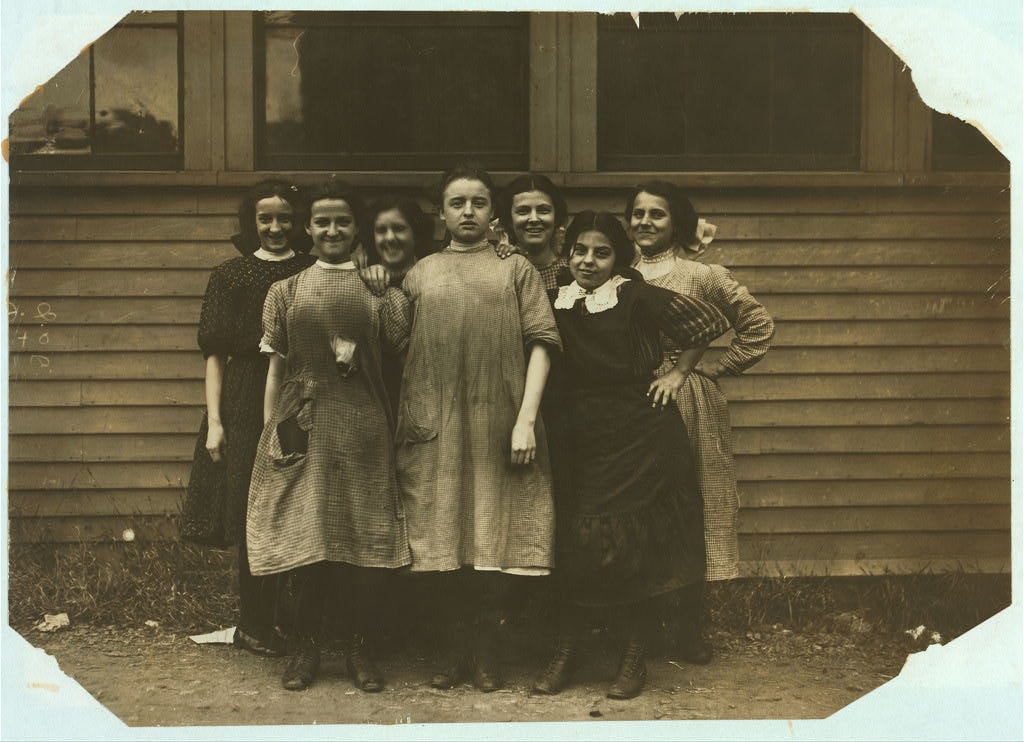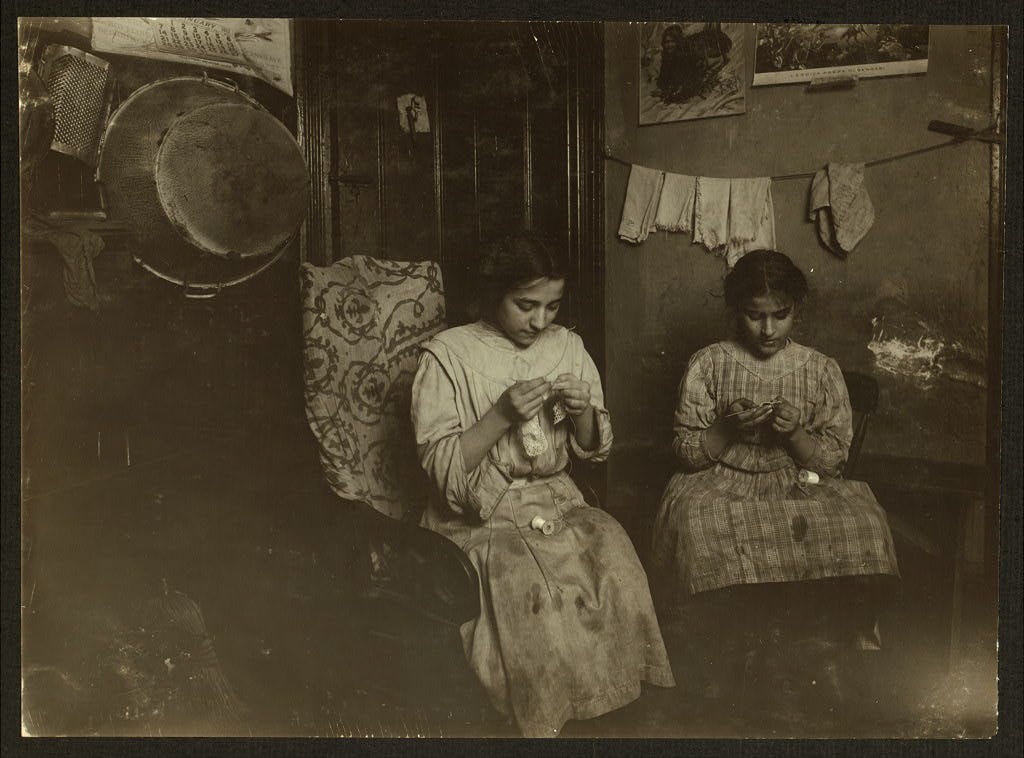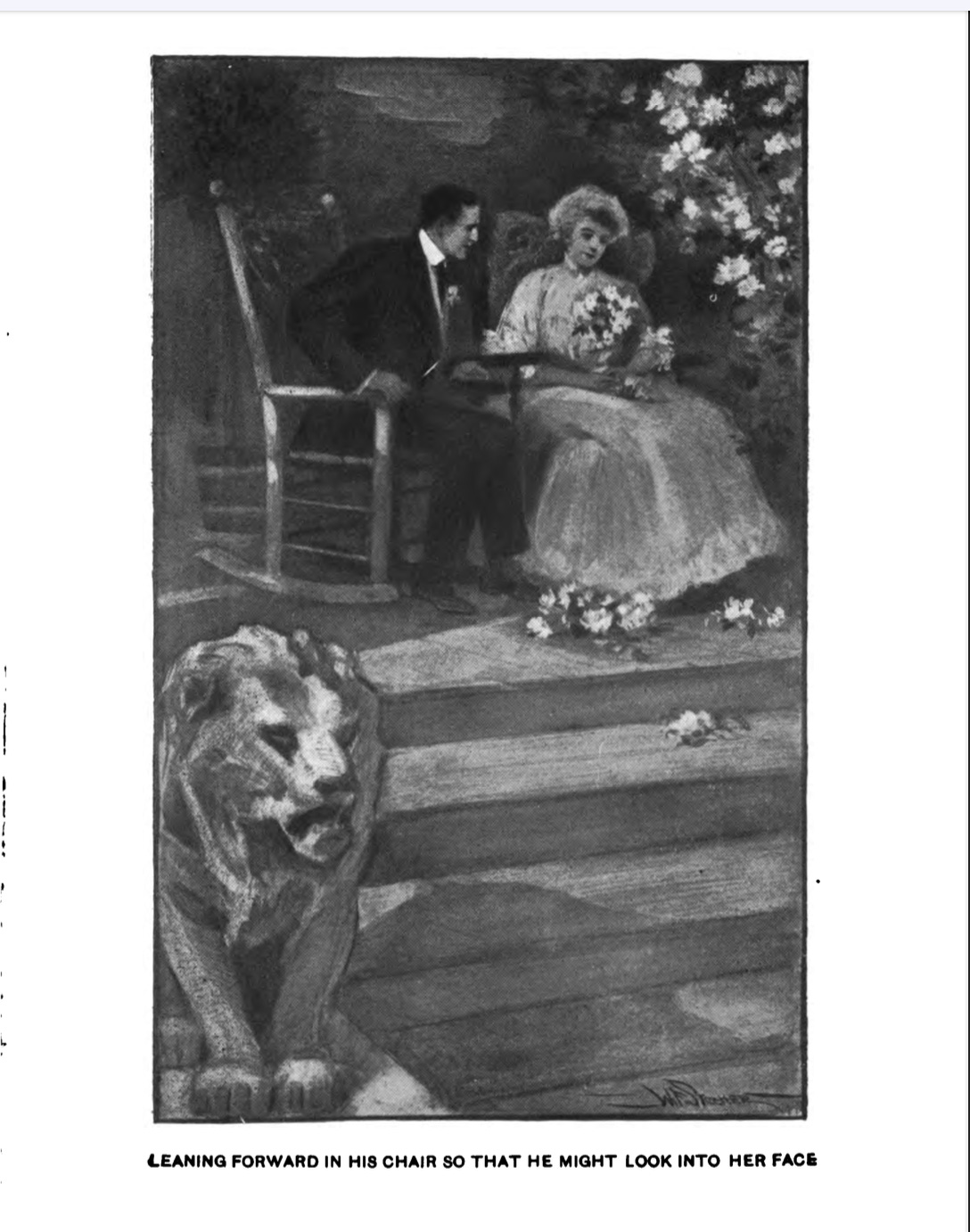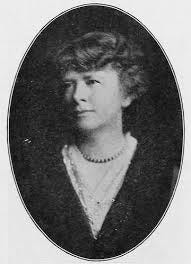Eleanor Porter’s first three novels exposed the abuses of child labor. Childless herself, she had a heart for children and was passionate about their cause. She describes their plight in dramatic detail, contrasting virtuous youth and heartless masters. But, in time, Eleanor came to believe that “realism” in fiction was becoming too pessimistic and unnecessarily negative. She was a reformer, not a muckraker. She just wanted equal time for optimism and positivity.
Eleanor Porter was unapologetically sentimental and optimistic. Her belief in redemption, secular and spiritual, meant she could not portray victims who were wholly powerless nor could she imagine a situation that was completely hopeless.
When she wrote Cross Currents, Eleanor was new to novel-writing. It is an adult novel with a message. Cross Currents is also a love story and a saga of survival. More important to Pollyanna fans, the book, introduces characters and situations that surface in her future stories: a child protagonist, a kindly doctor, a vehicle mishap and a mischievous-but-good-hearted boy.
I am preparing a survey of Eleanor Porter’s works, mainly her fifteen published novels, but also some of her many short stories and whatever else Eleanor wrote that seems interesting to me. Surprisingly, not all EHP work available today was published in her lifetime. I have collected obscure stories and titles, mostly manuscripts that John Porter released after her death. These post-mortem manuscripts may not have met her standards or those of her publisher, but some of the rejected stories and novels are fun to look at. The Beldingsville Beacon sticks mostly to work accepted for publishing in her lifetime, like this one: Cross Currents. — Jim McIntosh (March 2025).
Cross Currents
Mrs. Frank Kendall, a soldier’s widow, and their five-year-old daughter, Margaret, arrive at Grand Central Station in New York and wait for a carriage to take them across the city. By chance, Mrs. Kendall encounters an acquaintance, Miss Farrell, who agrees to mind Margaret while she waits for her train. This allows Mrs. Kendall to visit a shop across the street from the station. Miss Farrell, charmed by the blue-eyed golden-curled child, waits. But, Mrs. Kendall does not return. She was struck by a vehicle when crossing the street and taken to a hospital unconscious. Margaret and Miss. Farrell do not know this.
Miss Farrell, alerted of an earlier train and sure of Mrs. Kendall’s imminent return, departs the station and leaves Margaret on the bench alone. Finally, despairing of her mother’s return, Margaret ventures outside to look for Mrs. Kendall, but she is swept away by the crowd and lost on the streets of New York City. Exhausted and overwhelmed, she accepts help from a street urchin named Bobby McGinnis.
Bobby McGinnis, unknown to Margaret, had witnessed the mishap and, from the accident scene, pilfered Mrs. Kendall’s pocketbook. Only when Margaret mentions that her mother was wearing a blue dress does Bobby realize that the little girl’s mother was the accident victim. (He thinks that she was killed and he does not tell Margaret.) Bobby had taken only the cash in the pocketbook and had discarded keys and papers, thus destroying any clues to Margaret’s identity or destination. Bobby and Margaret return to Grand Central and Margaret dictates a note to leave on the bench for Mrs. Kendall.
"Jack!" shuddered the woman, tightening her clasp on the sobbing little girl in her arms. "You wouldn't put her there! It would kill her! She ain't used ter such work."
.Bobby and Margaret go to the McGinnis apartment in a smelly tenement where Mrs. McGinnis feeds the girl. Mrs. McGinnis is a kindly person who comes from the country. However, Mr. McGinnis, “Jack” is an unhappy alcoholic who pawns Margarets expensive clothes and sends her to Tim Sullivan’s sweat shop, where grownups cough and children are “hollow-chested” and “thin-faced.” Bullied and threatened by Sullivan, children as young as five did rudimentary sewing and basting of garments for long hours in filthy conditions.
Margaret, underfed and overworked, loses her sparkle. Sullivan trades her to Tom Swaney, another abusive master whose workers fold and paste paper bags. She is no longer childish. Maggie is six years old. Finally, after a year of horrid treatment by Swaney she runs away again, to hide near the New York waterfront.
"An' I reckon you'll be fur comin' home with me then, an' be my little gal," he said in her ear. And when Margaret screamed and struggled he repeated soothingly," My little gal-I'll treat ye jest like my little gal!” And he did —he paid her no wages!
Now, the story turns to Mrs. Kendall, Margaret’s injured mother. She is unconscious for two months in the hospital. She learns of Margaret’s disappearance and of the contents of the note left by the little girl and Bobby McGinnis. Crazed by grief, Mrs. Kendall will not leave Margaret’s bench at Grand Central Station. She is rescued from a near-coma by a handsome young physician, Doctor H. M. Spencer. Romance seems possible, but she stays alone at Five Oaks seeing no one. Three years pass.
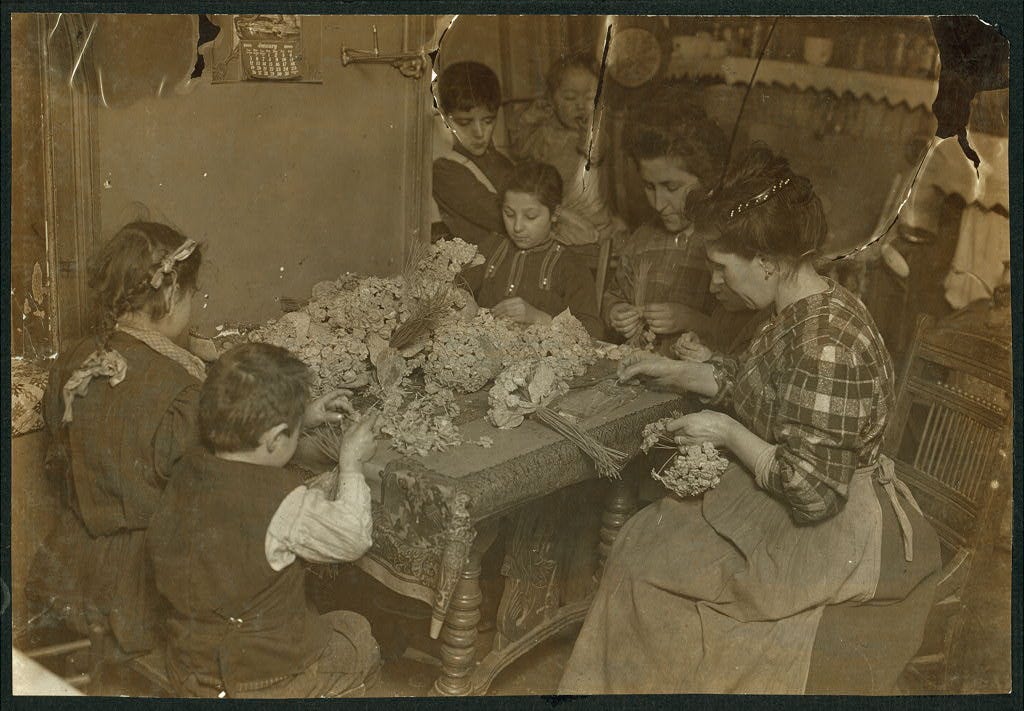
Finally, Dr. Spencer suggests that Mrs. Kendall visit a sad lady whose daughter, Sadie, ran away a long time ago and who has not been heard from since. After much resistance, Margaret’s mother visits Mrs. Merton, who is revealed to be the mother of Mrs. McGinnis, the woman in the slum who showed kindness to Margaret. Sadie Merton had eloped with Jack McGinnis! Now, Jack has died and Mrs. McGinnis writes to her mother seeking to come home. In describing her existence, she mentions Margaret’s stay with the McGinnis family, and with this clue, Mrs. Kendall and the doctor go back to the city a second time.
"Mrs. Merton, it's both our children-it’s your baby and mine! We've found them both—we've found them both!"
After Margaret fled to the waterfront from Swaney’s paper bag shop, she met Patty Murphy and her two sisters (Arabella and Clarabella) who live without adults in a tenement basement in “The Alley.” Patty and the girls make paper flowers for kindly Mrs.Whalen and form a street urchins’ cooperative which “divvies up” their income (an exercise that delights Margaret). Patty Murphy shows Margaret how to shoplift and Margaret becomes street-wise “Mag of the Alley.” She stays two years and turns eight.
Little by little the old ways had been dropped, little by little the old manner of speaking had been forgotten; and Margaret Kendall, dainty, sweet and lovable, had become "Mag of the Alley,"pert, mischievous and willful — but still lovable, for nothing had quite taken away the warm, tender little heart.
Mrs. Kendall and Doctor Spencer take separate residences in New York City to look for Margaret. (Mrs. Kendall is too distressed for a love affair.) They witness mistreatment and exploitation of children, scenes which haunt Margaret’s mother and goad her pursuit. She is near collapse when she hears of Patty Murphy and the children’s collective, but she cannot recognize Margaret from a spoken description of the swaggering Mag of the Alley. Her hopes dashed again, Mrs. Kendall falls ill and returns to Five Oaks in Houghtonsville. Mrs. McGinnis who now lives nearby with her children, regrets that she did not tell Mrs. Kendall an important clue to Margaret’s disappearance. But, Mrs. Kendall is gravely ill. Again Dr. Spenser attempts to interest her in a helping project that will get her “outside herself.” A fresh air camp.
"Thar's trees, an' grass, an' eatin', an’ sleepin' in beds in a row, an' flowers, an’ singin' songs, an'—an' eatin', an' playin', an’ swingin', an'—an' eatin' —"
"Ho! You've said dat three three times already!" cut in Patty.
"Well, we eat three times a day," flashed Katy, triumphantly.
Neighbor Katy Goldburg enthralls the kids in the Alley with descriptions of Mont-Lawn, a fresh air camp up the Hudson River in Tarrytown. Maggie and Patty save money to pay the mission for a stay, but the mission refuses the cash and sends all four children for free. (They donate the money to the mission.) Maggie, Patty, Arabella and Clarabella will enjoy two sessions at Mont-lawn.
At first, Maggie is comically suspicious of anything the camp provides “for free” and is defiant toward the staff, but Mont-Lawn brings out hidden qualities in the girl, and hints of her past life. While attending camp, clues to Margaret’s true identity begin to emerge: she dimly recognizes Grand Central Station; she examines her old handkerchief that is embroidered with the words “Margaret Kendall;” the generosity and gentleness of the Mont-Lawn staff awakens memories of a mother’s love.
Mont-Lawn becomes the instrument of Margaret’s salvation and the literary device that Eleanor Porter invented to resolve two problems: the child’s negative personality and the mother’s deep grief. Maggie undergoes an explicit Christian conversion and becomes a worship leader when she returns to the Alley. The fresh air camp also becomes the instrument of Mrs. Kendall’s recovery and deliverance.
After Doctor Spenser discovered Mont-Lawn, he encourages Mrs. Kendall ‘s involvement to get her “out of herself.” Much moved, she pays for a bed at the camp. A card by the bed reads: “In Memory of Margaret Kendall,” and Maggie recognizes the name from her stitched handkerchief. She tells a teacher at about the matching name, and the Mont-Lawn staff write to Dr. Spenser. This leads to him visiting the Alley and eventually identifying Margaret.
After overcoming last-minute complications, Doctor Spenser returns Margaret to her mother at Five Oaks. Now that Margaret is back at home, the doctor acts on his understanding that Mrs. Kendall is free to marry, and, in the last paragraph of the novel, we learn that the little girl witnesses them kissing.
Turn of the Tide, the story’s sequel, came out a year after Cross Currents. Turn of the Tide tells how Margaret is torn by loyalty to her poor friends in the slums while fitting into her mother’s upper-class world. We’ll look at Turn of the Tide next.
EHP’s story is set in New York and describes home-based child labor, but the dangerous jobs in mines and factories were the chief targets of reformers. Reform was slow to come in Massachusetts. Mill-owners in Massachusetts were not as abusive as the mine-owners in Pennsylvania, but they resisted all attempts to regulate the labor force. Farm kids of elementary school age and accustomed to seasonal hours, tended machines year-round, for fourteen-hour shifts, six days a week in Lawrence and Lowell. Until mandatory education became law, reformers had little chance against the infernal practice.
PROGRESS?
In 1903, Massachusetts passed a law prohibiting children under 14 from working in factories, mills, or mechanical establishments during school hours.
Illustrations: Google edition of Cross Currents and Library of Congress.\.
Copyright © Jim McIntosh 2025







